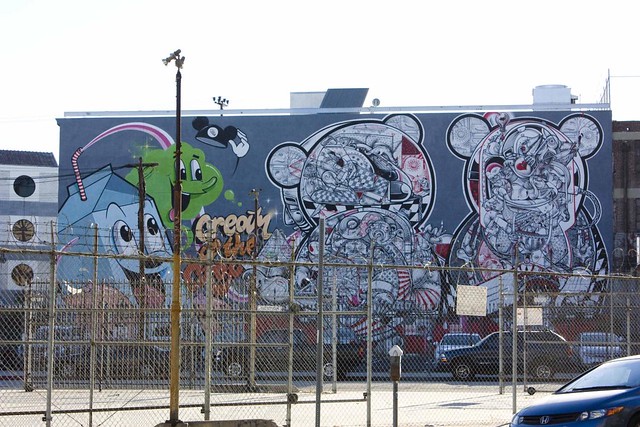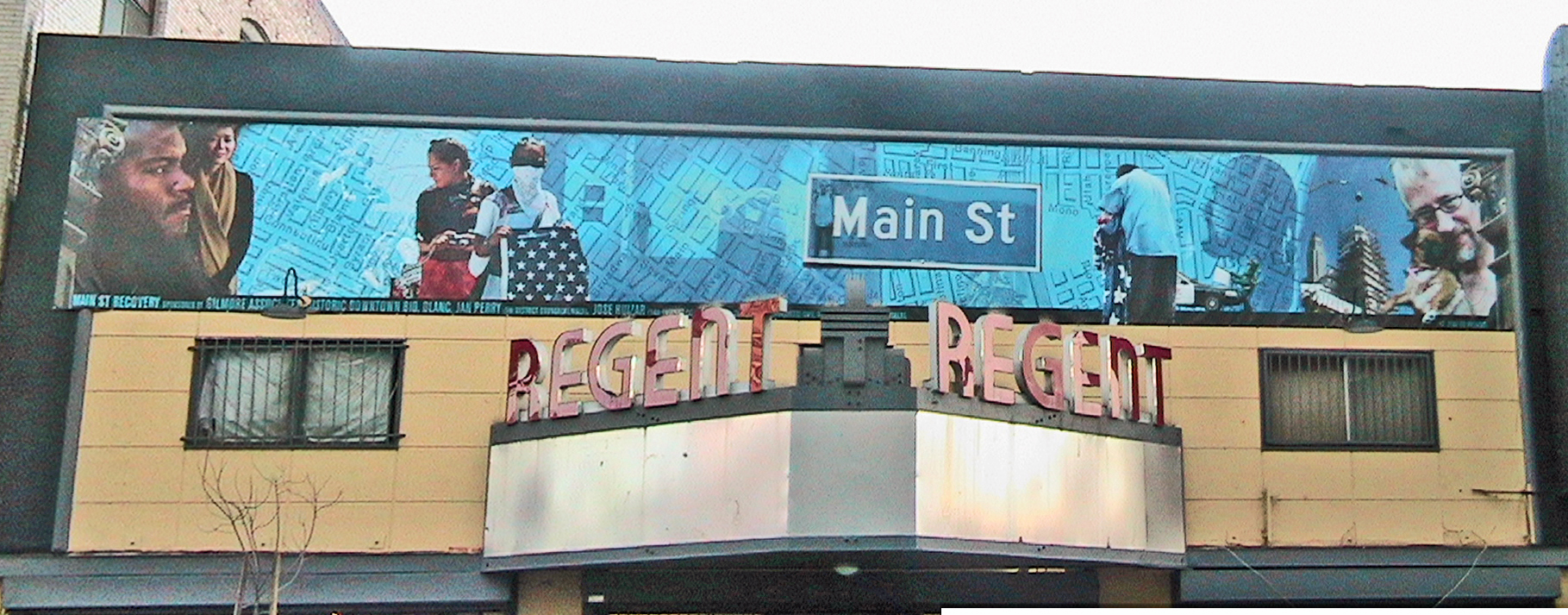What do mural ordinances do to community?
July 12, the City Planning Commission convened for an eventful session. From the looks of things, it wasn't hard to tell that it was going to be a long day. Two items up for public comment: the long-awaited mural ordinance and the proposed ban on big box retailers in Chinatown.
 |
| Mural by DabsMyla, NOSM and How. Photo by: Carren Jao. |
While the proposed ban got some resolution, the mural ordinance continues to slog through the public process. Effectively banned on private property since 2008, murals in LA seem to be the victim of the usual tangle of bureaucratic process, but, after hearing the public comments last Thursday, I've come to believe its delay stems from a deeper reason. At the heart of the Mural Ordinance are two endlessly debatable questions namely: What is art? and How far does my freedom of speech go? Let me explain.
As many will know, language is a primary consideration in government. The letter of the law is what we all naturally adhere to. In any discussion of a mural ordinance, one cannot get away from defining what a mural is. Its definition would be the foundation of determining what type of work is and is not covered in the ordinance. One would think the answer is easy, but it is not really.
 |
| The Pope of Broadway (a tribute to Anthony Quinn), 1985. Painted by Eloy Torrez, assisted by Bob Grigas. Photo by: Brazilfox. |
For muralists, a mural is simply paint applied to a wall without any commercial message. In contrast, by the most current definition, it is defined as "A hand-painted, hand-tiled, or digitally printed image on
the exterior wall of a building that does not contain any commercial message." [emphasis mine]
 |
| Ed Fuentes' digital mural "Main Street Recovery". Photo by: Sean_Yoda_Rouse. |
There lies the problem. One after the other, muralists stood up outraged that any digital image could possibly stand side by side with handpainted murals. Anna Siquieros, niece of Mexican muralist David Alfaro Siqueiros, testifies: "For six months, these muralists have come together, doing your protocol and trying to work with the city of Los Angeles. Why have you chosen to disregard your own community participation in this process? In whose interest is this proposed ordinance? Mural painting is handpainted it does not include vinyl. It defeats the artist's rights to living wage...this is a loophole sir for advertisers to be able to come in under the mural ordinance."
The other contentious item was the ordinance's restriction of applying murals only to residential units that are five units or larger, shutting out single-family homeowners who are open to having murals painted on their homes.
As the meeting progressed, it was clear the discussion had progressed from these two seemingly pedestrian items to a discussion of bigger questions. In defining mural art to include digital processes, is the City doing right by its muralists? But then, should it shut out digital artists in creative expression? Is it taking away the possibility that digital art (i.e. graphic design perhaps) is an artform in itself?
The proposed ordinance also limited murals to homes that have five units or more. In doing so, the Code Studies group had tried to tread a delicate balance between homeowners who like the neutrality of solid-colored walls and muralists who would want to express their creativity, but the effort seemed in vain. The muralists present were fighting for every inch of their rights. Should the ordinance pass as written, the likes of Barbara Black, who invited NoHo students to decorate the 50-foot alley wall beside her home and garnered a fine in the process, would truly be shut out of the artistic process. Only with an exhaustive community process involving lots of meetings and consensus could Black be able to paint her walls.
 |
| A mural project along Marmion Way and The Metro Gold Line in Highland Park sponsored by COFAC and Avenue 50 Studio. Photo by waltarrrrr. |
How far can we go to allow freedom of speech? Will neighbors be comfortable with a potentially provocative message drawn on the walls of the home just down the street from them? Would they be worried about their property values going down? Or would it go up, because finally there is some color on the walls and life on the streets?
These are important questions, which frankly have no clear cut answers. Even the Planning Commission was divided. Each one of them had drawn different lines in the sand. Motions were proposed; motions failed.
If I were asked purely on a theoretical level: I do think digital art is an artform in itself and it deserves the possibility of being used in murals. But I don't believe that advertising has a place on mural walls. It seems simple enough to ask the local government to police advertising, but because the Department of Cultural Affairs only limits itself to approving permits based on time, place and manner--not content--drawing the line between advertising and art becomes an infinitely difficult task. Besides, by the rules of the mural ordinance the obviously Coco-Cola-fied repainting of Joe's LA Market and Deli would still be considered a mural, not an advertising. (Sorry guys, you'd have to check this out for yourselves. I can't seem to find a photo of the wall online.) Clearly, even murals aren't immune to being ads.
I also believe that single homeowners have the right to do with their property as they choose, even if it means adding color or creativity to an otherwise bland garage door. If we had banned creativity in single family homes, would we have something like Simon Rodia's Watts Towers?
I think there will be way more talking involved in this matter, but perhaps the best place to start with this mural ordinance is anywhere. At this point, I think we should heed Napoleon Hill's wisdom, "Do not wait; the time will never be just right. Start where you stand, and work with whatever tools you may have at your command, and better tools will be found as you go along." The bones of the ordinance seem to be in place, so let's pass something, if not no mural--handpainted or digital--will go up any wall--single-family residential or commercial. We would have deprived Los Angeles muralists of more years that could have gone toward creating truly eye-catching public works of art, and Los Angeles of a little more color.
